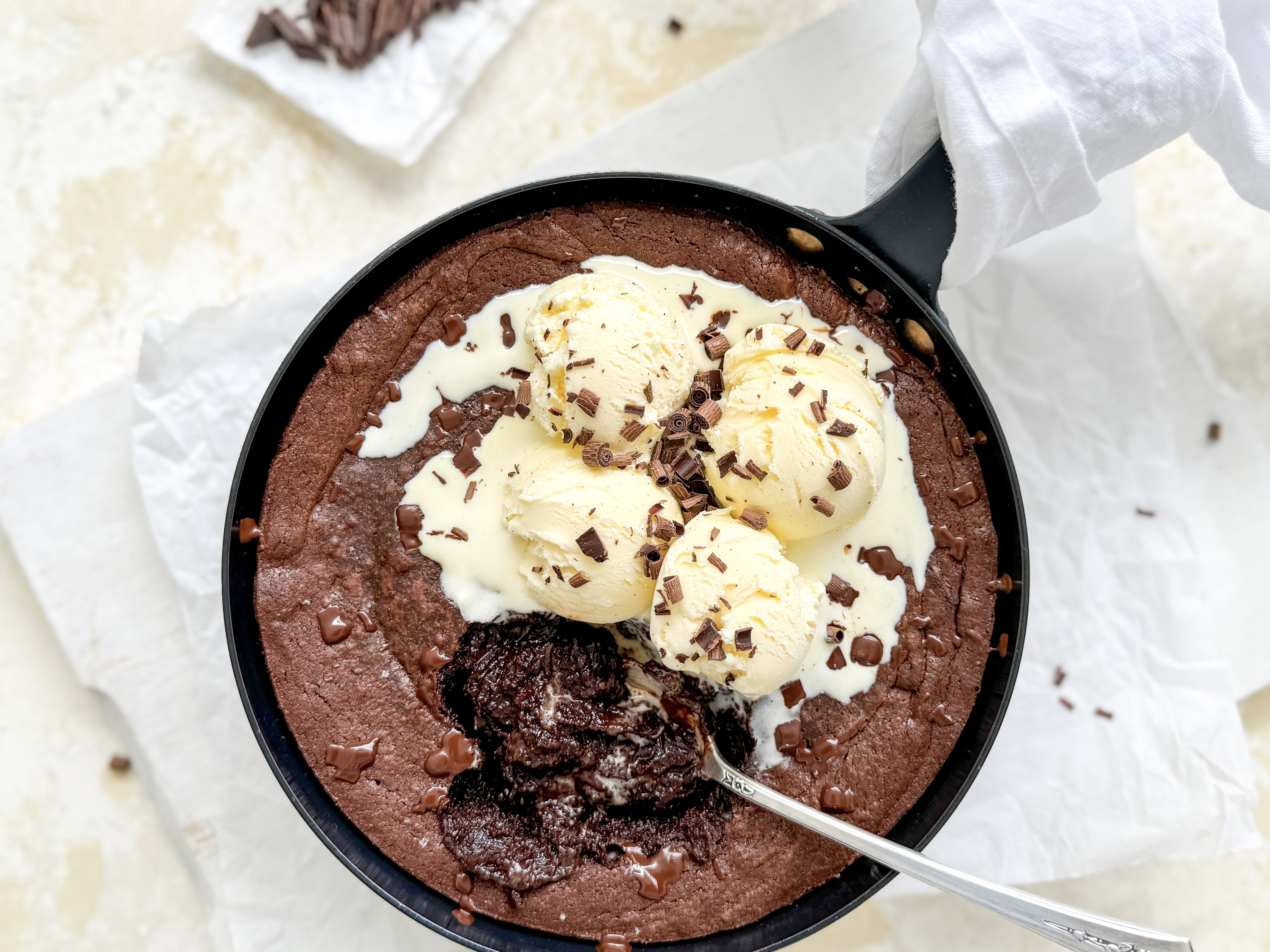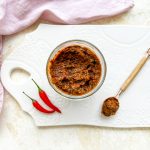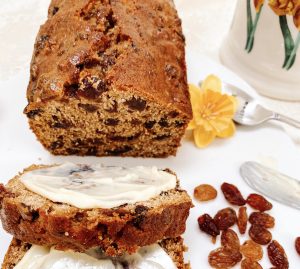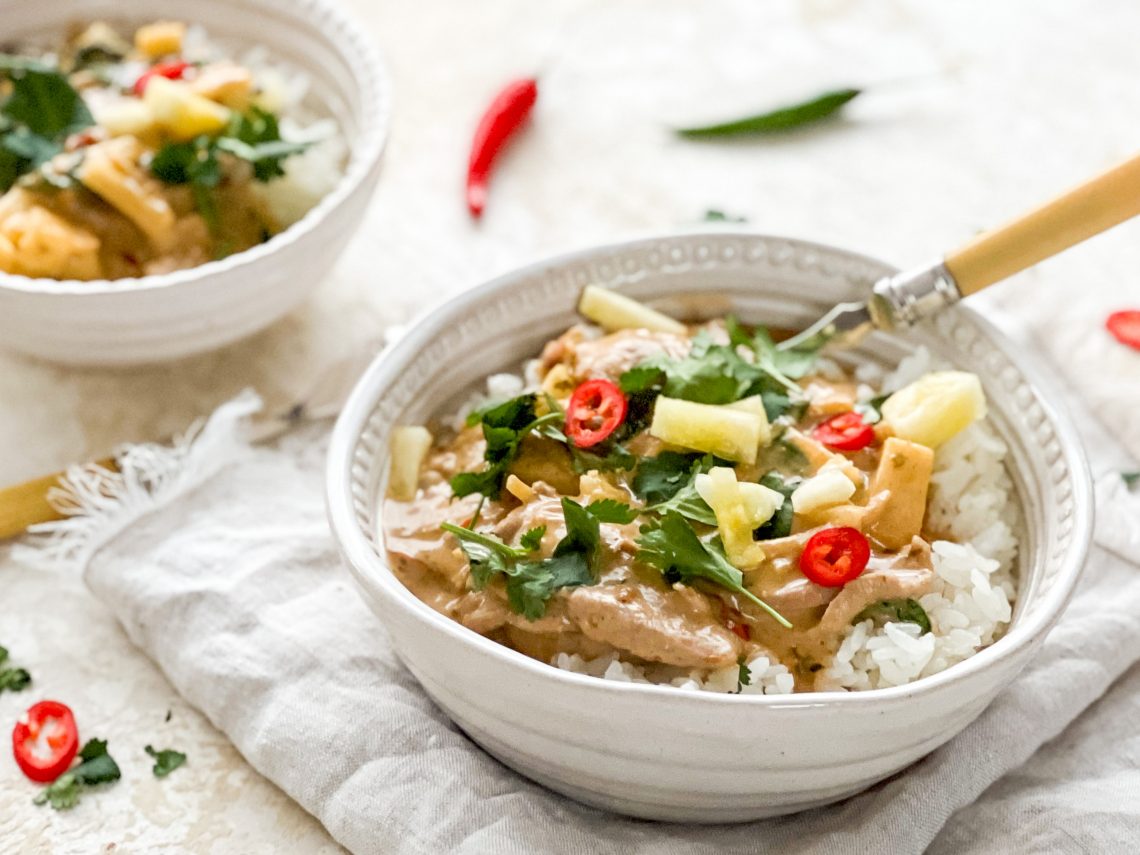
Thai Red Curry of Pork with Pineapple and Ginger
Thin slices of tender, melt in the mouth fillet of pork, cubes of luscious, sweet fresh pineapple and a good hit of ginger, this spicy, creamy, red, coconut curry packs a huge, complex and spicy flavour punch. Finish with the glorious aniseed flavours of Thai sweet basil, serve over steamed rice, ideally fragrant Jasmine rice, and top with coriander, extra pineapple and chilli slices – you will be amazed how quick and easy it is to make and blown away by how fabulously delicious it is. If you don’t like pork, it also works wonderfully well with chicken.
Try to use authentic ingredients.
Red Curry Paste
Red curry paste is made from a heady combination of chillies, galangal/ginger, lemongrass, garlic, shallots, fresh coriander leaves and roots, coriander powder, cumin, shrimp paste and lime, all coming together to add depth and complexity to your dishes. Homemade beats shop-bought hands down, and if you can find the ingredients, I really urge you to make your own. You can find my recipe here.
Red curry paste is the most versatile of all the Thai pastes. Whilst it is obviously an integral ingredient in Thai red curries, it is also used in satay sauces and Thai fishcakes. It can be used with meat, fish, eggs and vegetables, in curries, stir fries and soups, as well as dips, marinades and salad dressings. Like all curry pastes, you can adjust the spiciness to suit your own flavour palate, by reducing or increasing the quantity of chillies. It is quick to make and stores exceptionally well for a few weeks in the fridge, or up to six months in the freezer.
If you can’t get the necessary ingredients, or you just want a quick fix, Thai red curry paste is now widely available in most good supermarkets. However, if you live near an Asian store, go there. My favourite brands are Maesri or Mae Ploy.
Coconut Milk
I also buy coconut milk from my local Asian store. My favourite is Aroy-D. Although widely available in the UK, I find the supermarket versions slightly less rich and creamy but they are absolutely fine, if that is all you can get.
Thai Sweet Basil
This Thai basil is wonderfully sweet and full of aniseed flavour. I have no problem getting hold of it in my local supermarket in London, but have never seen it in the supermarket I go to in North Wales, so I guess it depends where you live. If you can’t find any, use normal basil instead. You can introduce the aniseed flavour by adding some fresh tarragon, or you could add some star anise to the curry sauce as it cooks. A whole star anise is very strong, so add it cautiously, maybe a quarter at a time. Remove, before you serve the curry.
Where is this recipe from?
This recipe is adapted from my favourite Thai Cookery book called ‘Spirit House’. The Spirit House is a renowned and award winning contemporary Asian restaurant and cookery school in Noosa, Queensland, Australia.
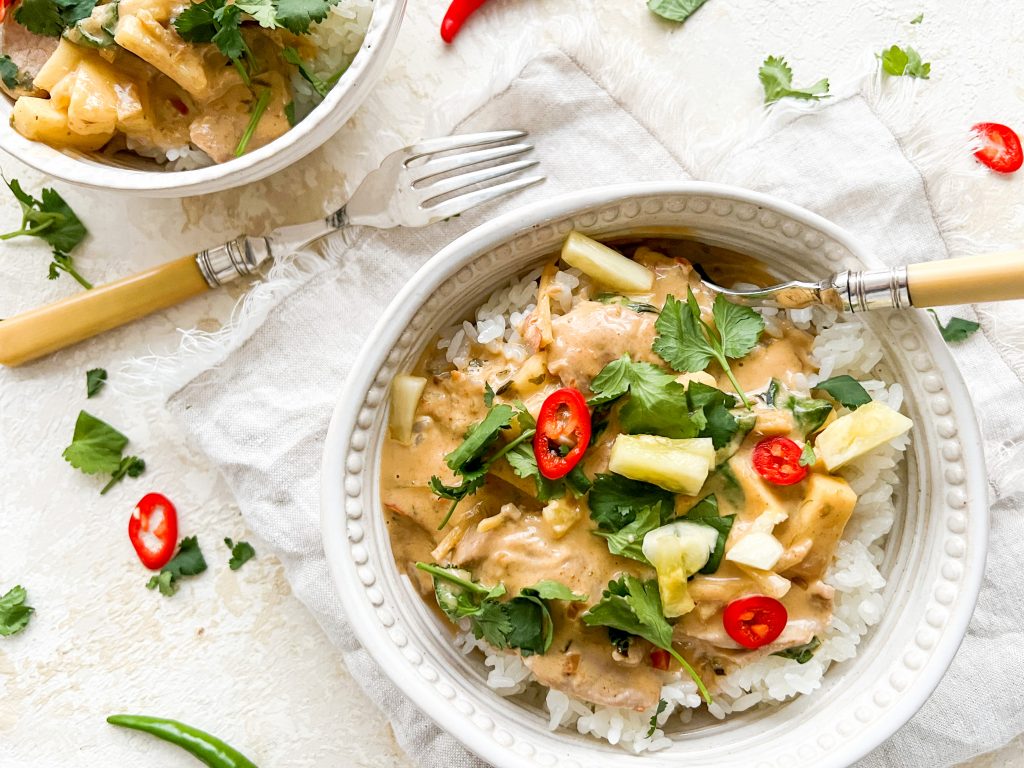
Leftover Rice?
If you have any leftover rice, why not make this delicious Thai Fried Rice with Prawns and Hot and Sour Sauce? Fragrant Jasmine rice is fried with sweet prawns, scrambled egg, red onion and garlic, seasoned with palm sugar and fish sauce and finished with fresh, juicy tomatoes, crispy beansprouts, crushed peanuts and loads of fresh herbs and spring onions. Sublime served just like this, but take it to the next level by drizzling the fried rice with a spicy, hot and sour sauce.
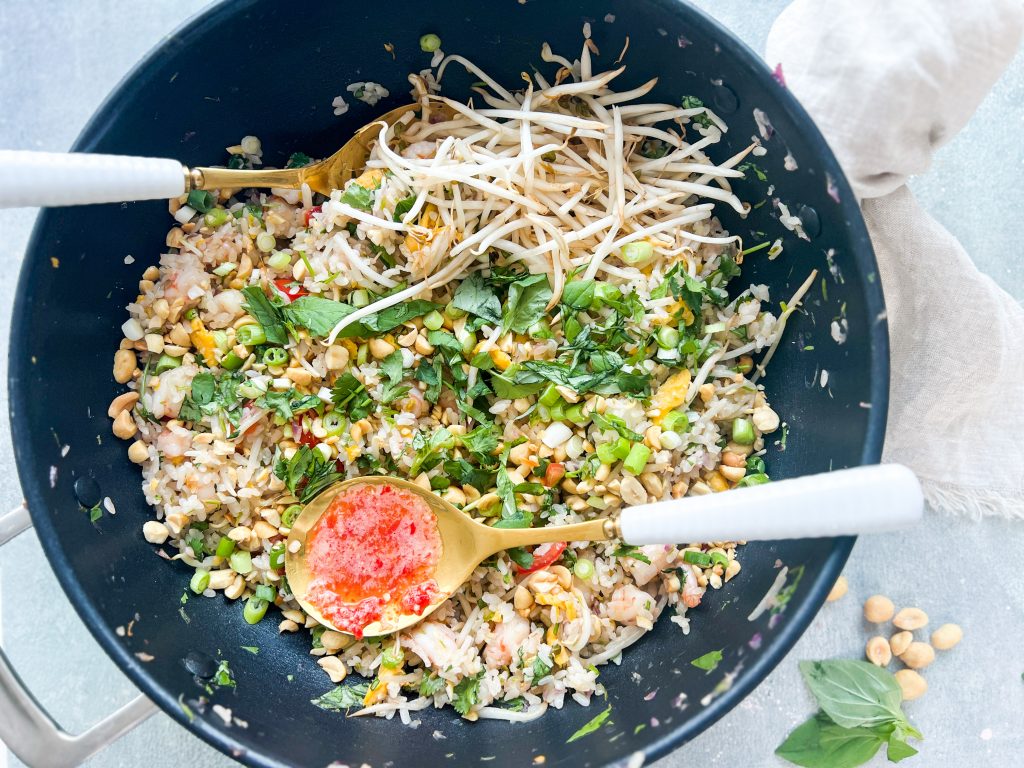
How to make Thai Red Pork Curry with Pineapple and Ginger
Collect all your ingredients together:
- peeled fresh root ginger, julienned
- tinned coconut milk
- Thai red curry paste (Homemade or shop bought)
- kaffir lime leaves
- uncooked pork fillet, thinly sliced
- palm sugar (or coconut, soft brown or caster sugar), or more to taste
- fish sauce, or more to taste
- pineapple chunks – ideally fresh, or tinned if not available
- Thai sweet basil leaves, roughly shredded
To serve:
- steamed Jasmine rice
- pineapple chunks – ideally fresh, or tinned if not available
- chopped fresh coriander
- sliced red chillies
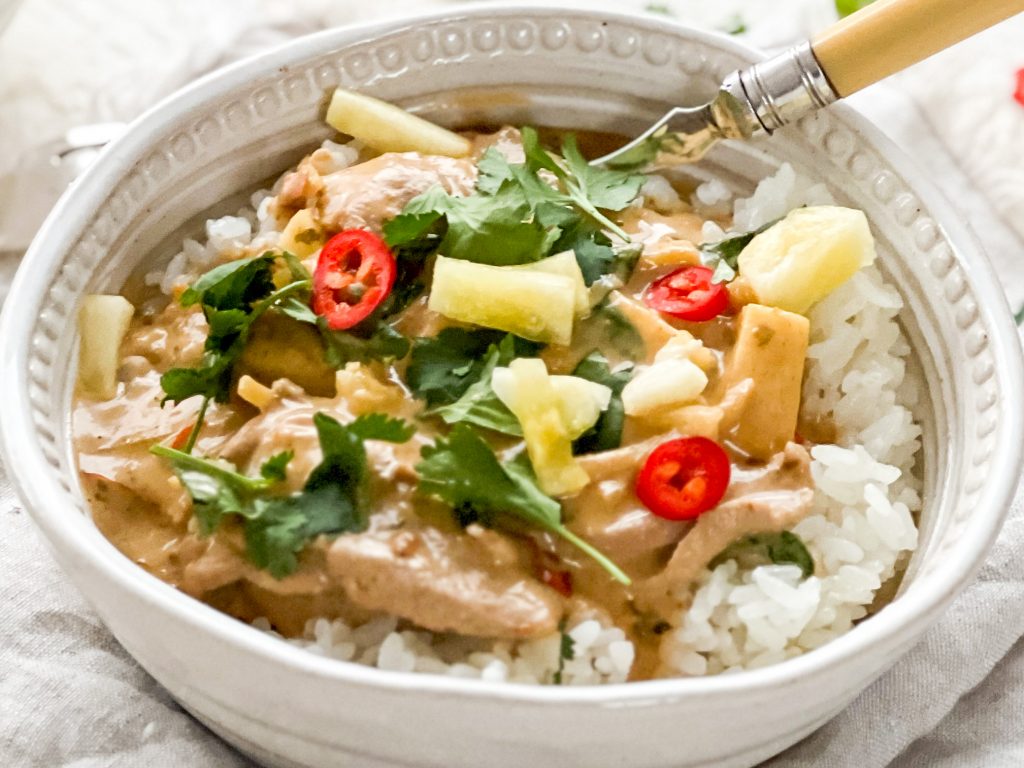
How to make this fabulous curry:
- Peel the ginger and julienne – cut into thin strips, similar in size to small matchsticks.
- Pour ½ a tin of coconut milk into a cast iron pan or saucepan and add the julienned ginger, Thai red curry paste and kaffir lime leaves.
- Heat over a low temperature, stirring from time to time, for around 10 minutes – until aromatic and the flavours have infused. Thinly slice the pork as the sauce cooks.
- After 10 minutes, add the remainder of the coconut milk, the palm sugar and the fish sauce. Bring to a gentle simmer and add the pork.
- Bring back to a simmer and continue to cook for 5 – 6 minutes, until the pork is cooked.
- Add the chopped pineapple and the Thai sweet basil. Cook for 1 minute.
- To serve: serve over steamed rice and garnish with the extra chopped pineapple, chopped coriander and sliced red chilli.
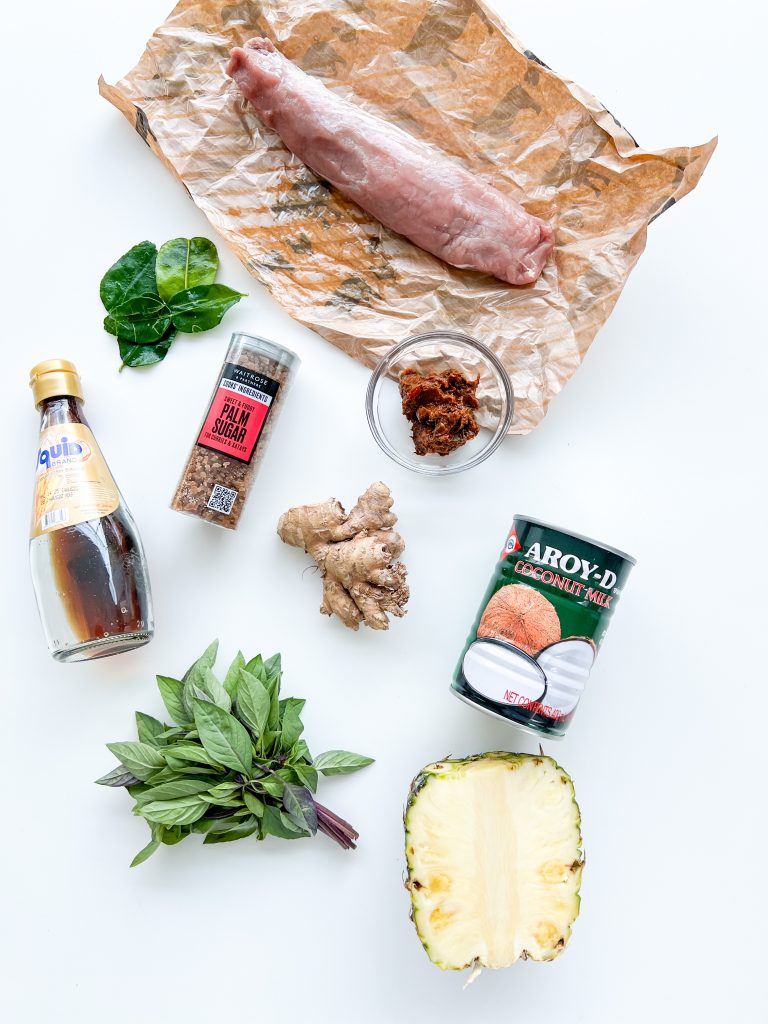
Ingredients 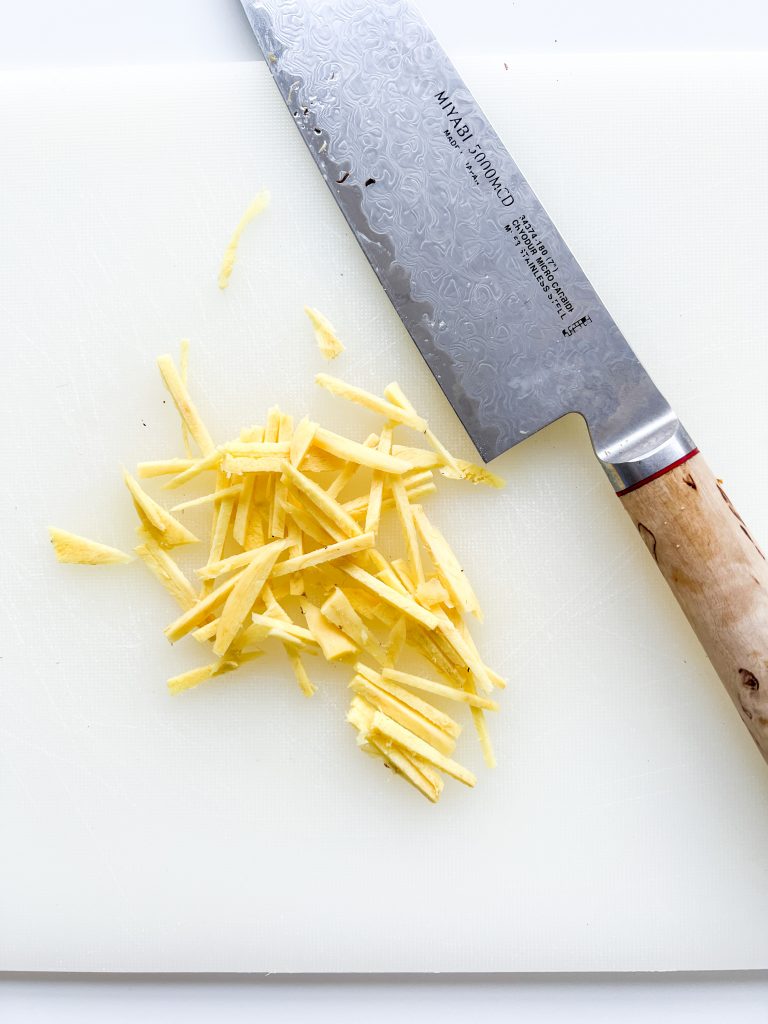
1 Ginger 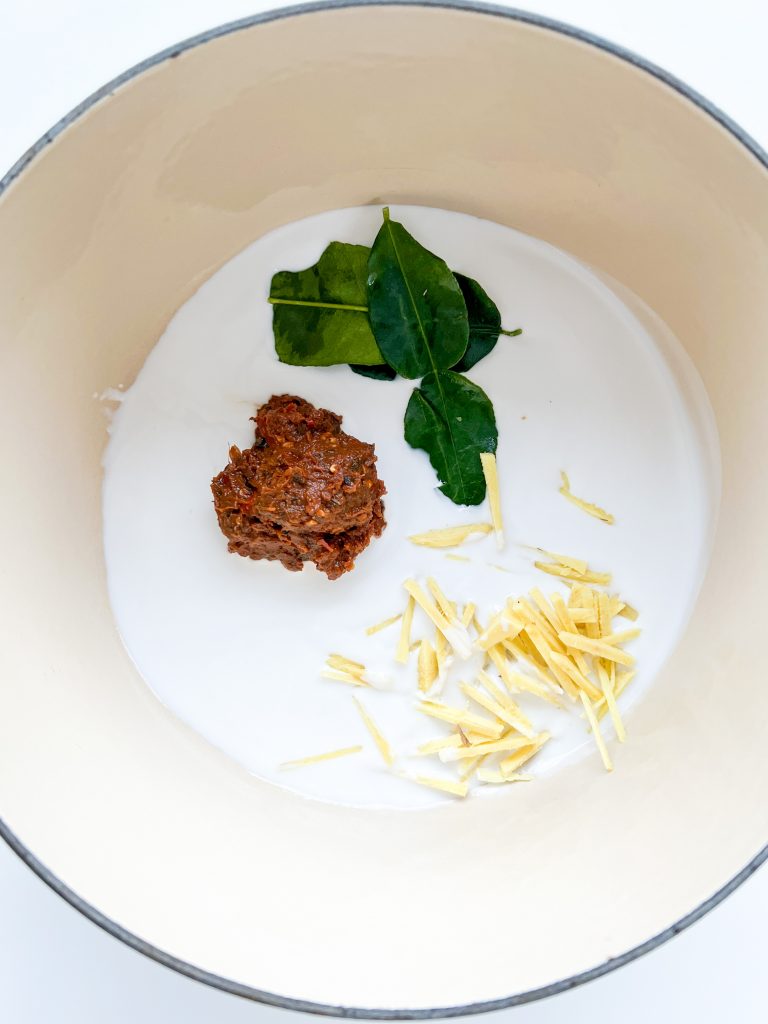
2 Coconut milk, curry paste, ginger, lime leaves 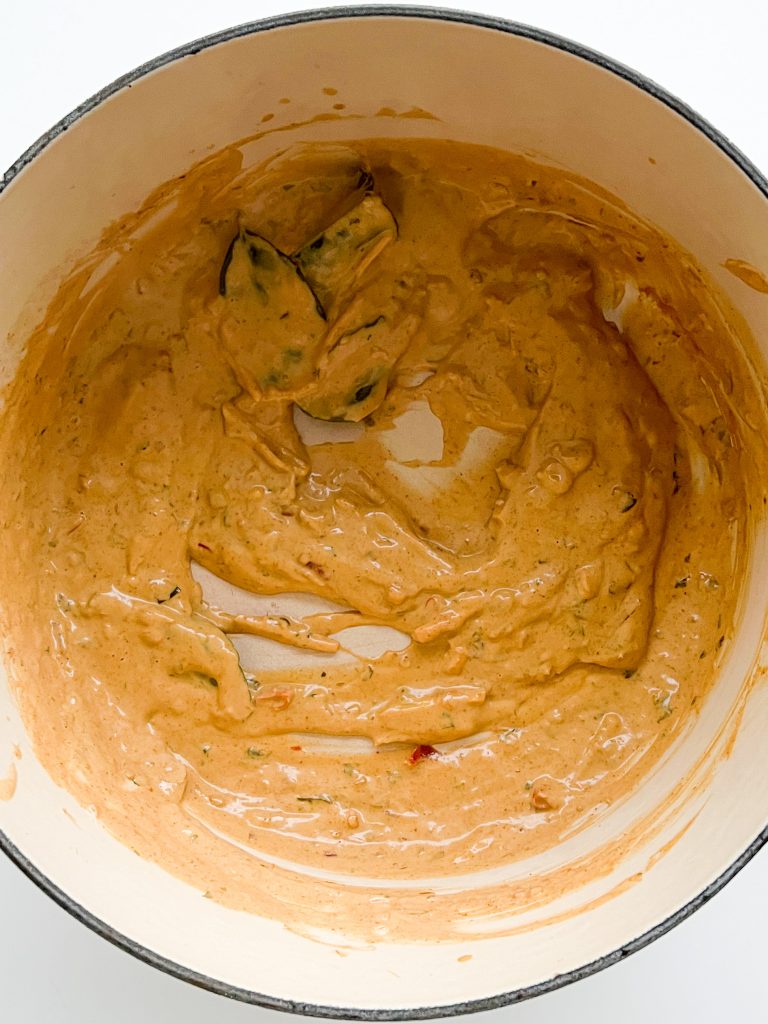
3 Cook 10 mins 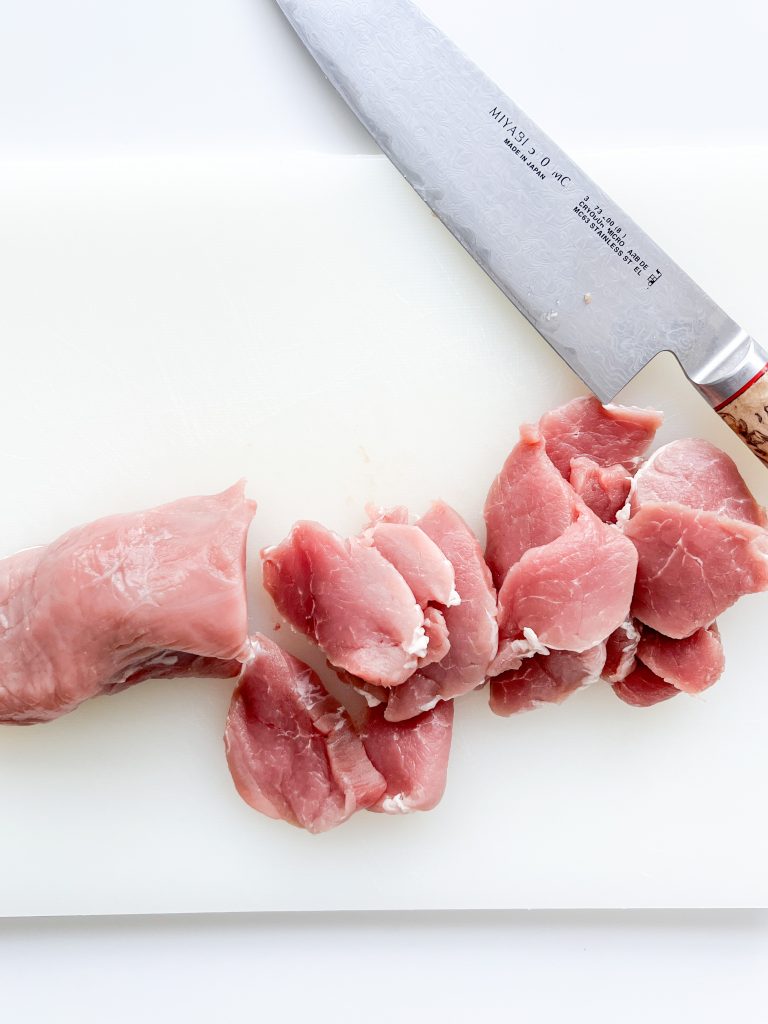
Pork 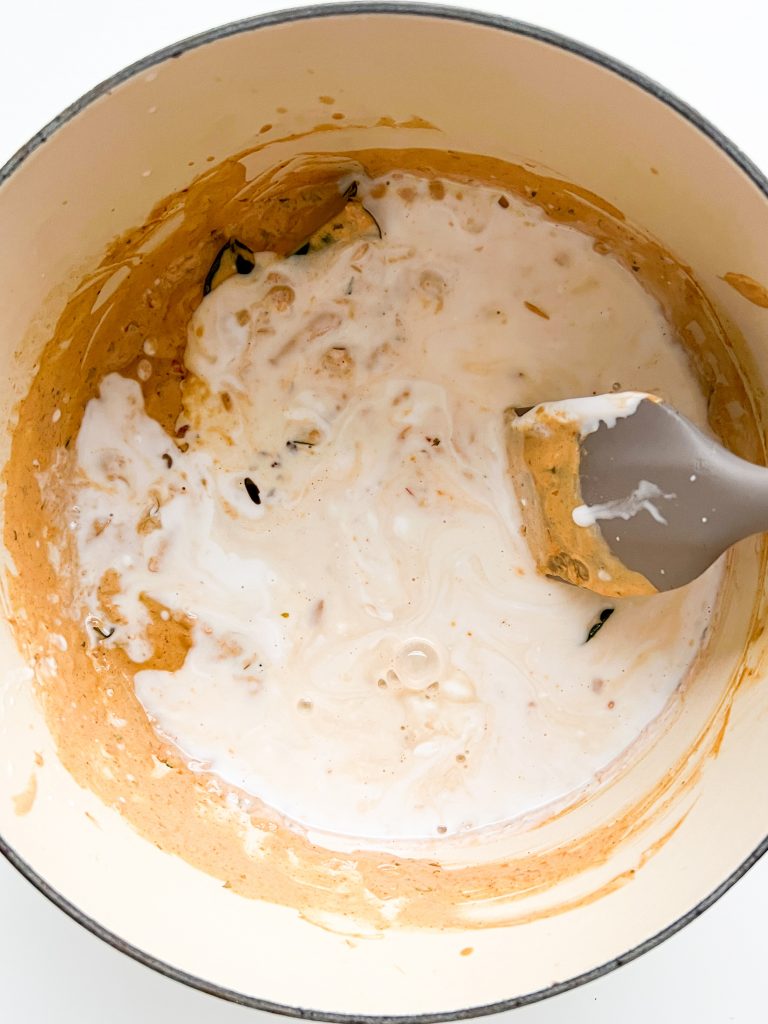
4, 5 Coconut milk, sugar, fish sauce 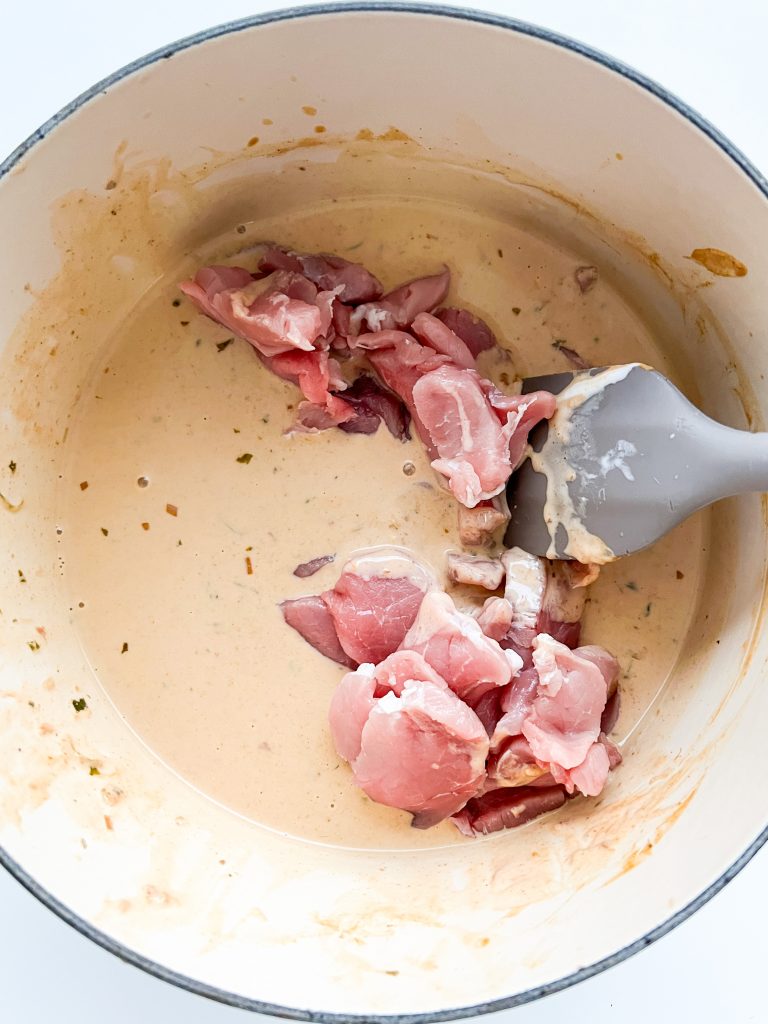
and pork. Cook 6 mins 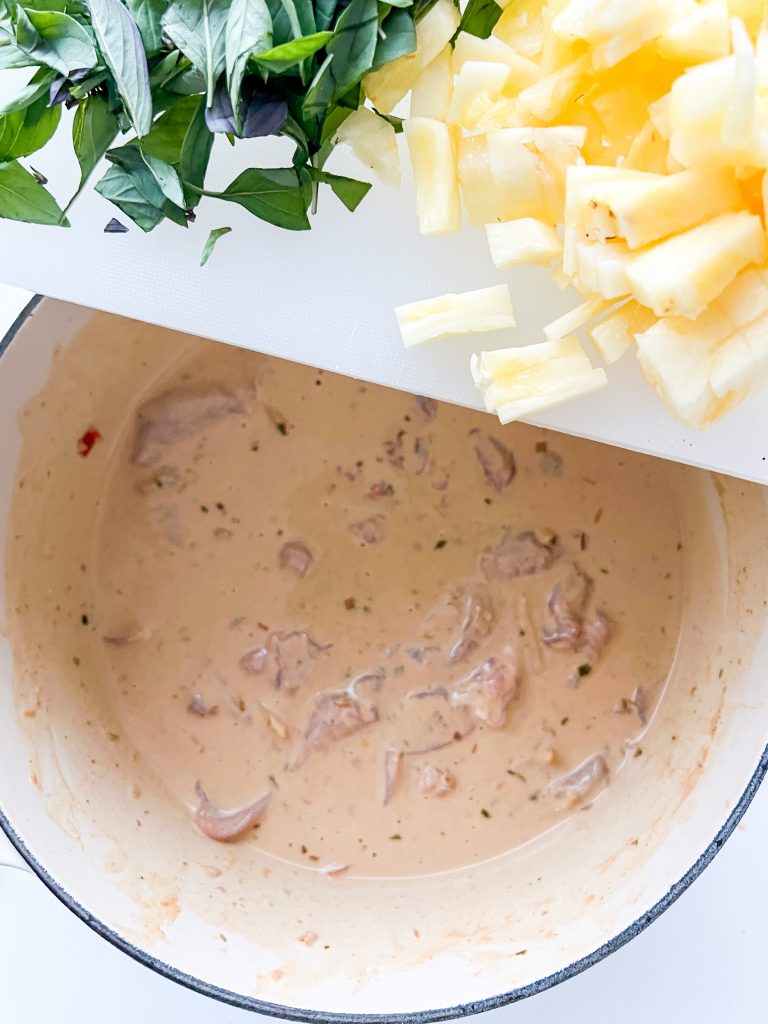
6 Pineapple, basil 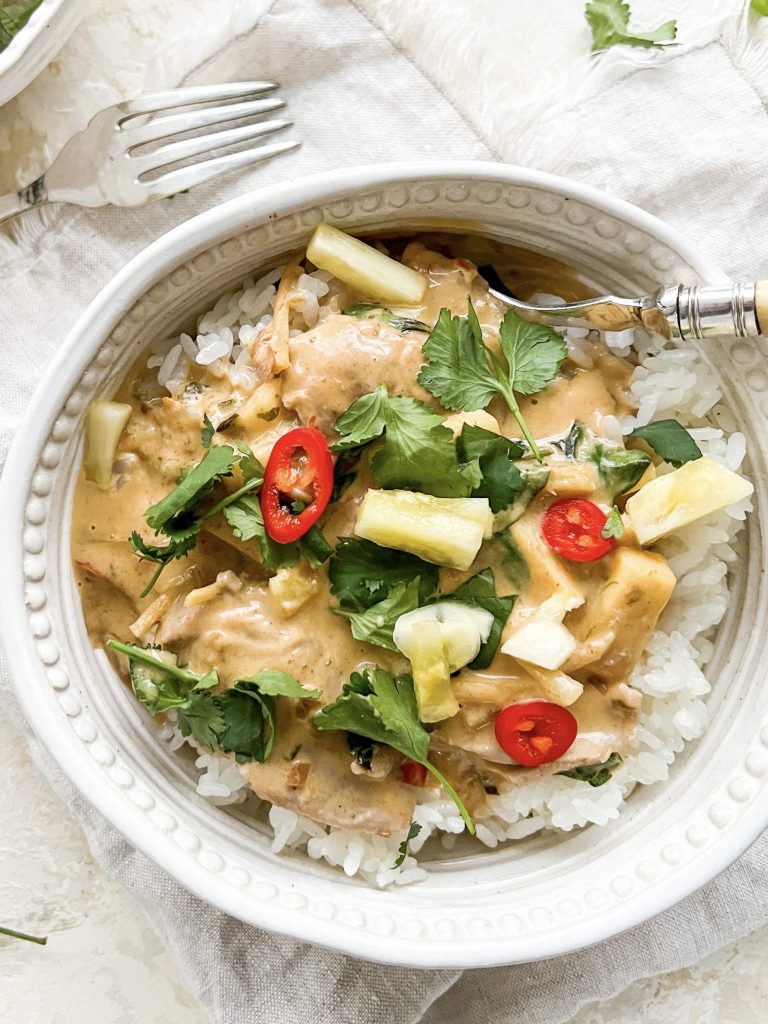
7 Serve
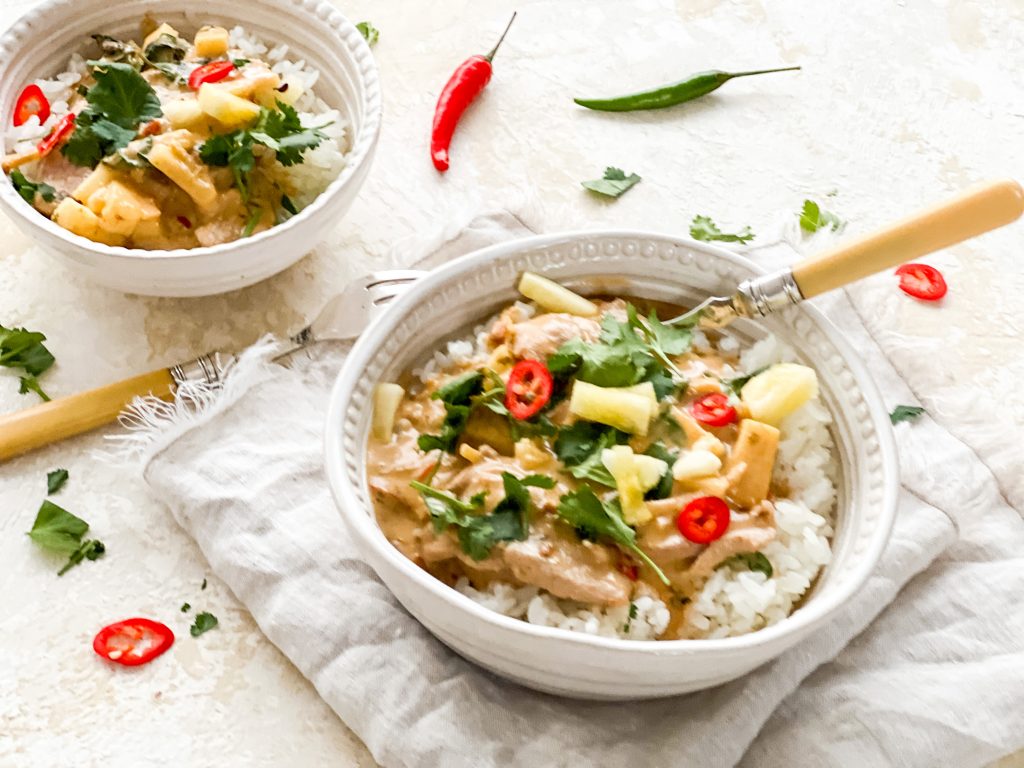
Made this recipe?
If you make this recipe, do please tag me on instagram @daffodil_kitchen. You could also leave a comment in the box directly below the recipe.
Thai Red Curry of Pork with Pineapple and Ginger
Thin slices of tender, melt in the mouth fillet of pork, cubes of luscious, sweet fresh pineapple and a good hit of ginger, this spicy, creamy, red, coconut curry packs a huge, complex and spicy flavour punch. Finish with the glorious aniseed flavours of Thai sweet basil, serve over steamed rice and top with coriander, extra pineapple and chilli slices. Soo good.
Serves 3
Ingredients
- 15g peeled fresh root ginger, julienned
- 1 x 400ml tin of coconut milk
- 35g – 55g/2 – 3 tablespoons Thai red curry paste – I use 45g/2½ tablespoons of my homemade paste. (Homemade or shop bought)
- 4 kaffir lime leaves
- 350g uncooked pork fillet, thinly sliced
- 15g/1 tablespoon palm sugar (or coconut, soft brown or caster sugar), or more to taste
- 1½ tablespoons fish sauce, or more to taste
- 125g pineapple chunks – ideally fresh, or tinned if not available
- 15g Thai sweet basil leaves, roughly shredded
To serve:
- steamed Jasmine rice
- 25g pineapple chunks – ideally fresh, or tinned if not available
- chopped fresh coriander
- sliced red chillies
Instructions
-
Collect together your equipment (see Recipe Notes below) and ingredients.
-
Peel the ginger and julienne – cut into thin strips, similar in size to small matchsticks.
-
Pour ½ a tin of coconut milk into a cast iron pan or saucepan and add the julienned ginger, Thai red curry paste and kaffir lime leaves.
-
Heat over a low temperature, stirring from time to time, for around 10 minutes – until aromatic and the flavours have infused. Thinly slice the pork as the sauce cooks.
-
After 10 minutes, add the remainder of the coconut milk, the palm sugar and the fish sauce. Bring to a gentle simmer and add the sliced pork.
-
Bring back to a simmer and continue to cook for 5 – 6 minutes, until the pork is cooked.
-
Add the chopped pineapple and the Thai sweet basil. Cook for 1 minute.
-
To serve: serve over steamed rice and garnish with the extra chopped pineapple, chopped coriander and sliced red chilli.
Recipe Notes
Equipment:
- Cast iron casserole/Dutch oven/frying pan/saucepan or wok
- Chopping board and knife
- Kitchen scales and measuring spoons
Try to use authentic ingredients:
Red curry paste is made from a heady combination of chillies, galangal/ginger, lemongrass, garlic, shallots, fresh coriander leaves and roots, coriander powder, cumin, shrimp paste and lime, all coming together to add depth and complexity to your dishes. Homemade beats shop-bought hands down, and if you can find the ingredients, I really urge you to make your own. You can find my recipe here.
Red curry paste is the most versatile of all the Thai pastes. Whilst it is obviously an integral ingredient in Thai red curries, it is also used in satay sauces and Thai fishcakes. It can be used with meat, fish, eggs and vegetables, in curries, stir fries and soups, as well as dips, marinades and salad dressings. Like all curry pastes, you can adjust the spiciness to suit your own flavour palate, by reducing or increasing the quantity of chillies. It is quick to make and stores exceptionally well for a few weeks in the fridge, or up to six months in the freezer.
If you can’t get the necessary ingredients, or you just want a quick fix, Thai red curry paste is now widely available in most good supermarkets. However, if you live near an Asian store, go there. My favourite brands are Maesri or Mae Ploy.
Coconut Milk
I also buy coconut milk from my local Asian store. My favourite is Aroy-D. Although widely available in the UK, I find the supermarket versions slightly less rich and creamy but they are absolutely fine, if that is all you can get.
Thai Sweet Basil
This Thai basil is wonderfully sweet and full of aniseed flavour. I have no problem getting hold of it in my local supermarket in London, but have never seen it in the supermarket I go to in North Wales, so I guess it depends where you live. If you can’t find any, use normal basil instead. You can introduce the aniseed flavour by adding some fresh tarragon, or you could add some star anise to the curry sauce as it cooks. A whole star anise is very strong, so add it cautiously, maybe a quarter at a time. Remove, before you serve the curry.
Where is this recipe from?
This recipe is adapted from my favourite Thai Cookery book called ‘Spirit House’. The Spirit House is a renowned and award winning contemporary Asian restaurant and cookery school in Noosa, Queensland, Australia.
You May Also Like
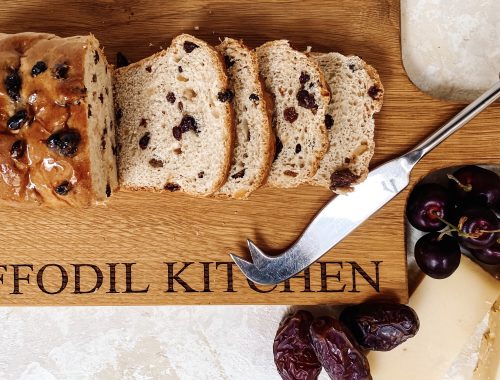
Traditional Bara Brith
4th March 2021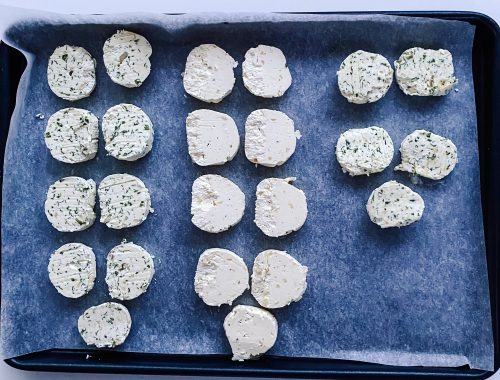
Garlic Butter, Parsley and Garlic Butter, Lemon, Parsley and Garlic Butter
11th June 2020